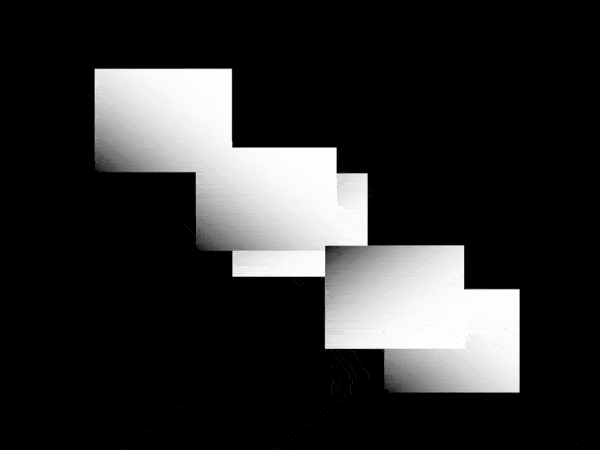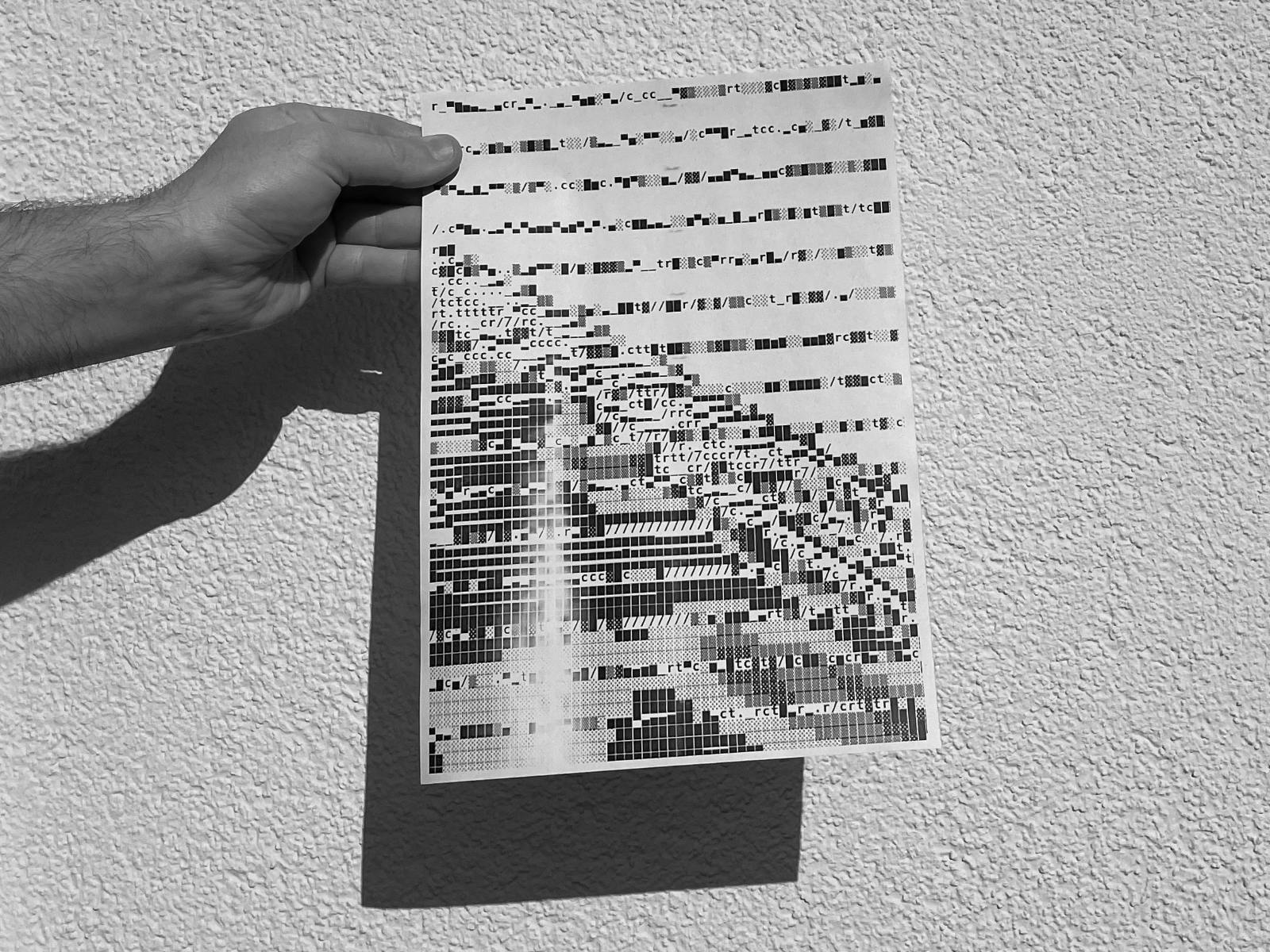Hannah Gmeiner on Permacomputing in Graphic Design

In an age of increasing digital consumption, Hannah, a recent visual communication graduate, explored “Permacomputing”—a sustainable approach to technology inspired by permaculture—in her bachelor’s project.
I was really amazed by her thesis, because I think it is so important that designers speak up honestly and formulate their concerns about unquestioned adaption of potencially harmful technological innovations. In her work, Hannah even goes a step further and presents Permacomputing as a potencial way out of the vicious circle.
Let’s give the word to Hannah.
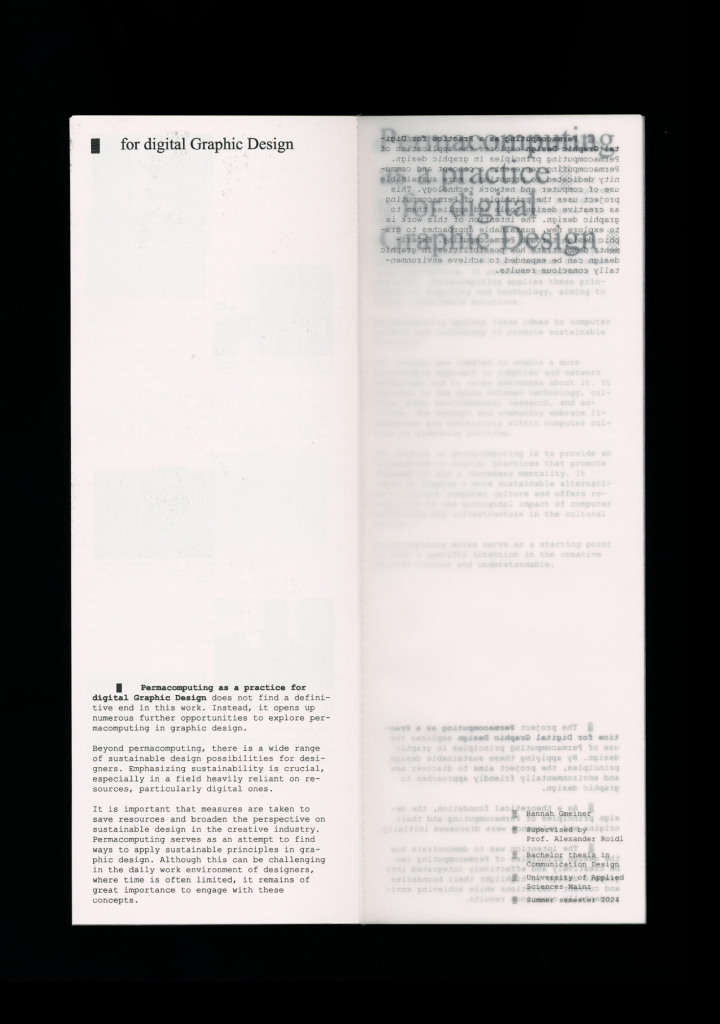
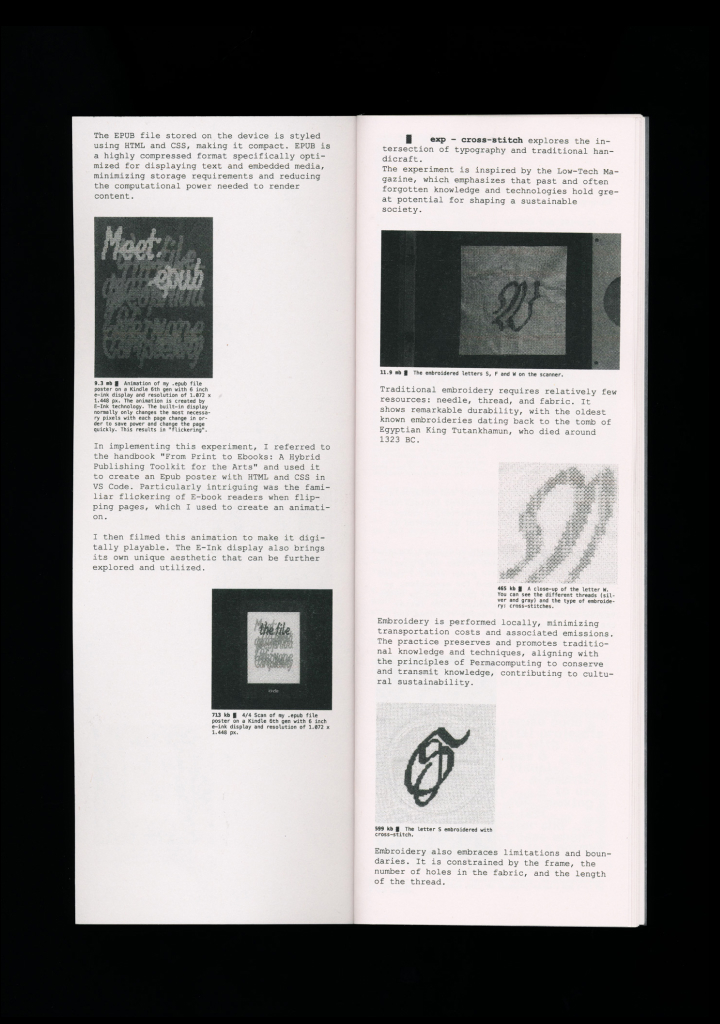
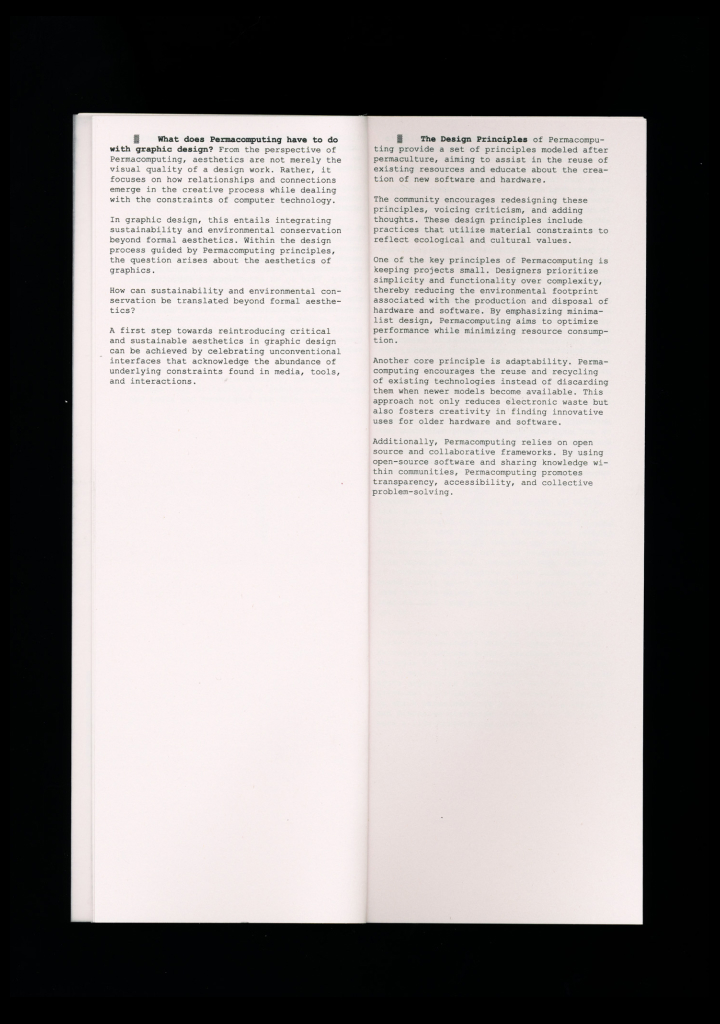
Hi Hannah! First of all, congratulations to your great Bachelor project and many thanks for sending me one of the beautiful printed editions! Honestly, I am amazed to see that young designers like you think that deeply about these topics. So let’s kick off the interview: Who are you?
Hi, I am a recent bachelor’s graduate in visual communication. I enjoy immersing myself in the world of graphic design, have a small fondness for coding and creative coding, and like to spend time in the digital world. Outside of that, I enjoy engaging in music and dance.
You’ve developed your bachelor project about “Permacomputing in Graphic Design”. What’s Permacomputing and why is it important and interesting?
Permacomputing describes a sustainable practice in computer technology, inspired by permaculture. What’s exciting for me is that it operates in the fields of technology, cultural work, environmental research, and activism. It consists of a community and a concept that embraces limitations within computer culture.
By offering a sustainable approach to network technology, Permacomputing provides an alternative to digital practices that promote consumption and a throwaway mentality.
For those who would like a more concrete definition, it is best to visit the following website: https://permacomputing.net
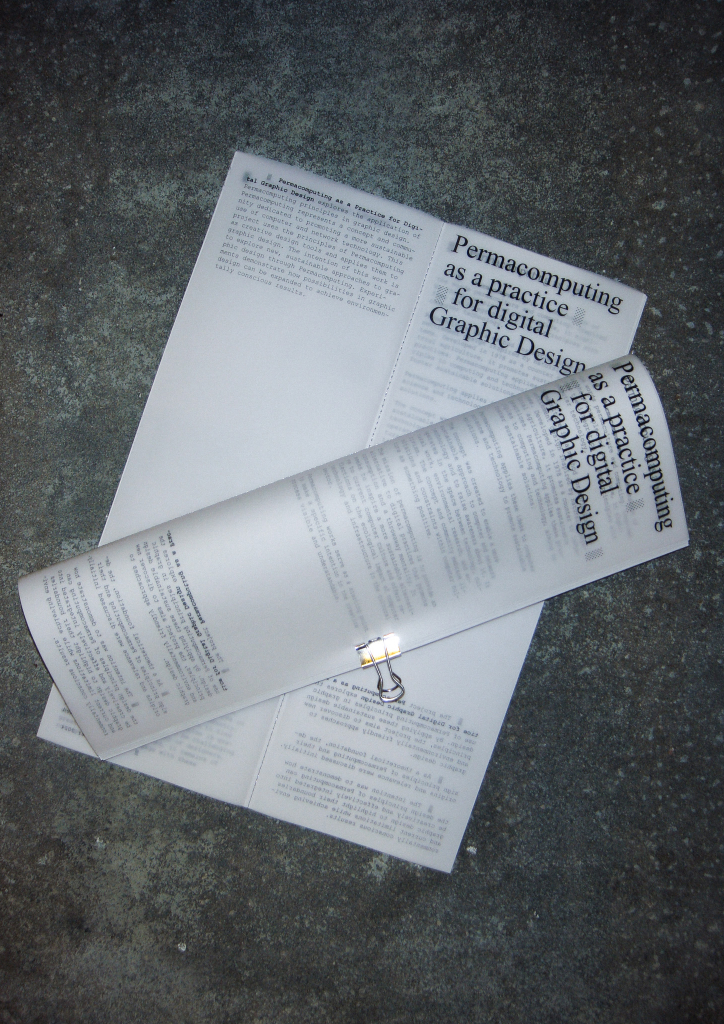
What are the Principles of Permacomputing?
The principles of Permacomputing pursue an approach to reusing existing resources. They also provide information on designing new software and hardware, showcasing practices that deal with the use of material limitations.
In summary, the principles consist of an approach that is as transparent, resource-efficient, low-complexity, sustainable, and flexible as possible.
The ethical foundation of Permacomputing is based on the permaculture principles of care for the earth and care for people. Integrating and making boundaries visible in the process plays a significant role. In my bachelor’s thesis, I tried to rethink technological relationships and aesthetic ideals with the help of these principles.
So Permacomputing is all about technological constraints, right? What is the difference between self-imposed and externally imposed limitations?
Yes, exactly. In the context of Permacomputing, a distinction is made between self-imposed limitations and externally imposed boundaries. Self-imposed limitations often arise from the idea that less is more. These set limitations can be quite formal and minimalist, such as in minimalism, art, or conceptual writing. They can also be related to the chosen technology, such as the use of old and limited hardware platforms. In this context, self-imposed limitations can function as amplifiers of creativity while simultaneously focusing attention on the process behind the work.
Externally imposed limitations can have a political origin, for example, when artists have to avoid galleries and other public places. They can also involve restrictive copyright laws, an uncertain legal status, or be of socioeconomic origin. These externally imposed limitations exist outside the creative process and are driven by external circumstances that less privileged artists must adapt to.
Limitations influence the creative process and thus the resulting aesthetics. Therefore, the Permacomputing principles and the application of limitations are seen as playful and creative. The challenge and motivation for Permacomputing is to embrace the constraint as a companion in the process.
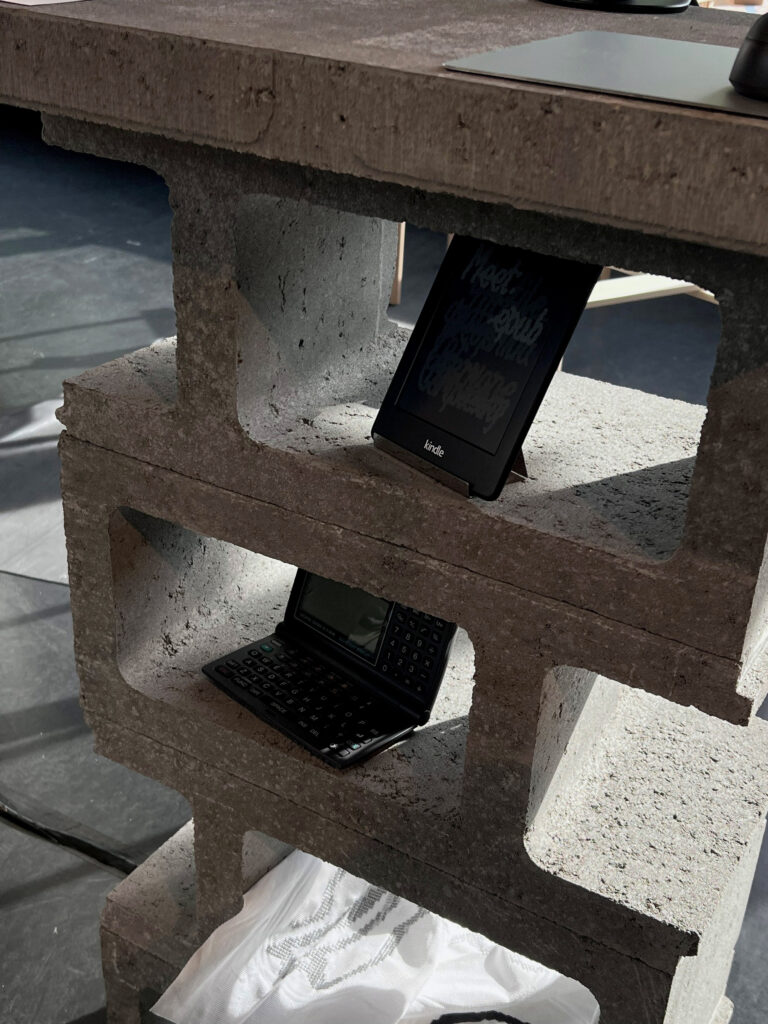
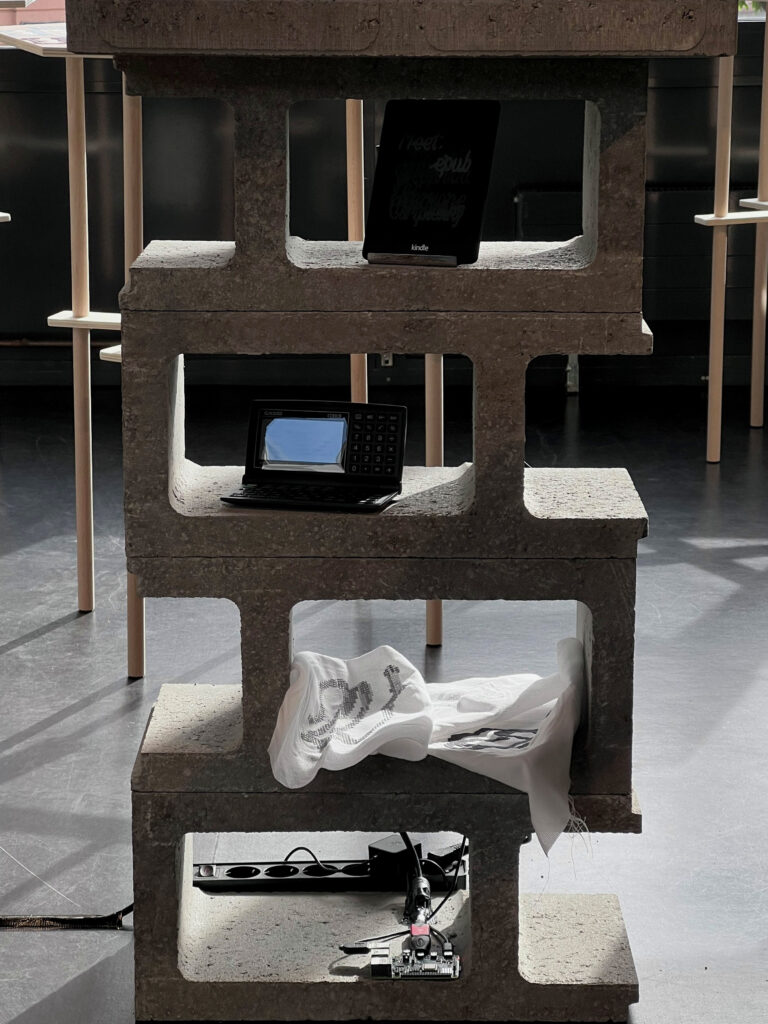
Tell us about the notion of “Maximalist Aesthetics”.
Digital progress is essentially always associated with quantitative growth. This makes computing more accessible, cheaper, and more ubiquitous, which in turn leads to higher energy consumption and increasing environmental impact from digital devices.
Permacomputing responds to this growth-oriented digital aesthetic, which plays a very significant role in the current environmental changes. This is primarily the reason for the emergence of sustainable computing scenes like Permacomputing.
The term that mainly occurs in the context of Permacomputing is ‘maximalist techno-aesthetics.’ This describes a mindset in which quantitative growth is seen as good and desirable. It glorifies a data-intensive reality, increasing complexity, and growing resource consumption by digital devices. Here, there is no concept of boundaries and limitations. The limits of what is possible are constantly being pushed in terms of system size and resource consumption. A particularly fitting example is the development of social media from text to image to video posts.
For artists and cultural workers, maximalist techno-aesthetics means constant pressure to adopt new tools and techniques. This is further expressed in the avoidance of discourses that criticize the aesthetics of these new tools and techniques.
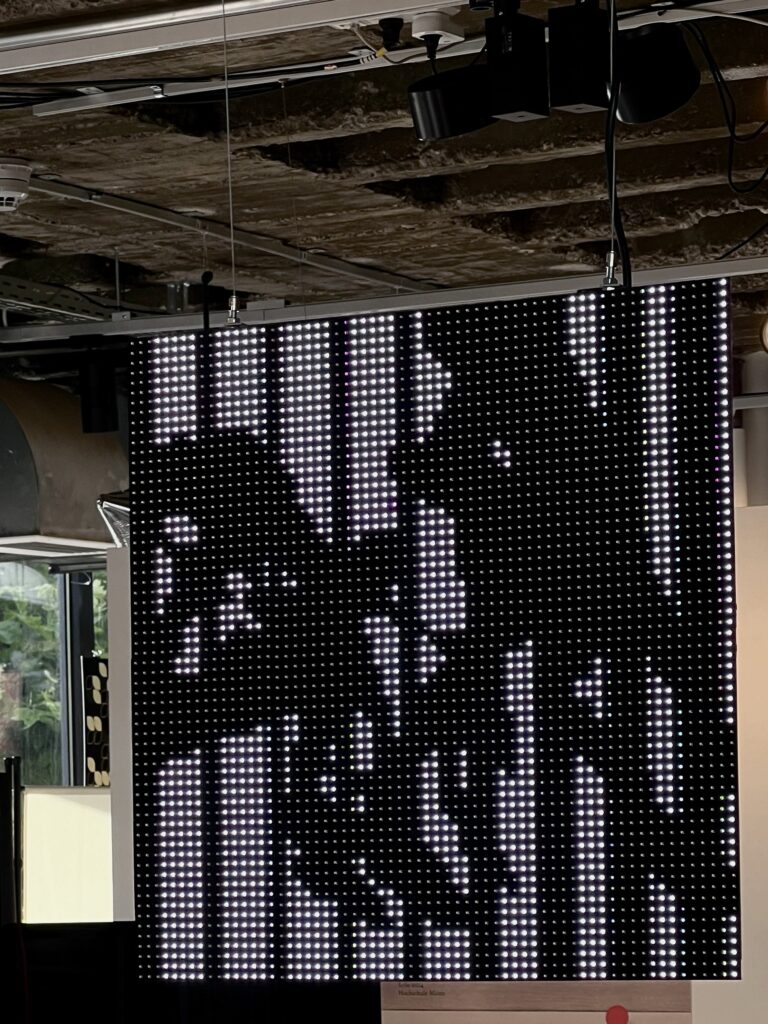
What’s the relation between Permacomputing and Nostalgia?
This is a particularly intriguing question, as nostalgia is often seen as a comforting and beautiful sentiment. However, when it comes to experimenting and reusing existing technology, Permacomputing views nostalgia in a different light.
We currently live in a society where new technology is constantly being presented, and economic growth is considered an ideal. As a result, any use of ‘obsolete’ things is labeled as nostalgic because they have exhausted their time of economic value. From the perspective of constant production and consumption, using these things doesn’t make sense.
From the perspective of Permacomputing, it is impossible to long for and romanticize a time when computer technology was better because such a time never existed. The moment when the economic lifecycle of a computer ends is celebrated because only then can its socioeconomic context be reclaimed.
The question of nostalgia in the Permacomputing aesthetic is entirely valid, but Permacomputing argues for a more reflective nostalgia, within which experimenting, playful combination, and critical thinking occur. It is about seeing computer devices as tools waiting to be rediscovered and repurposed.
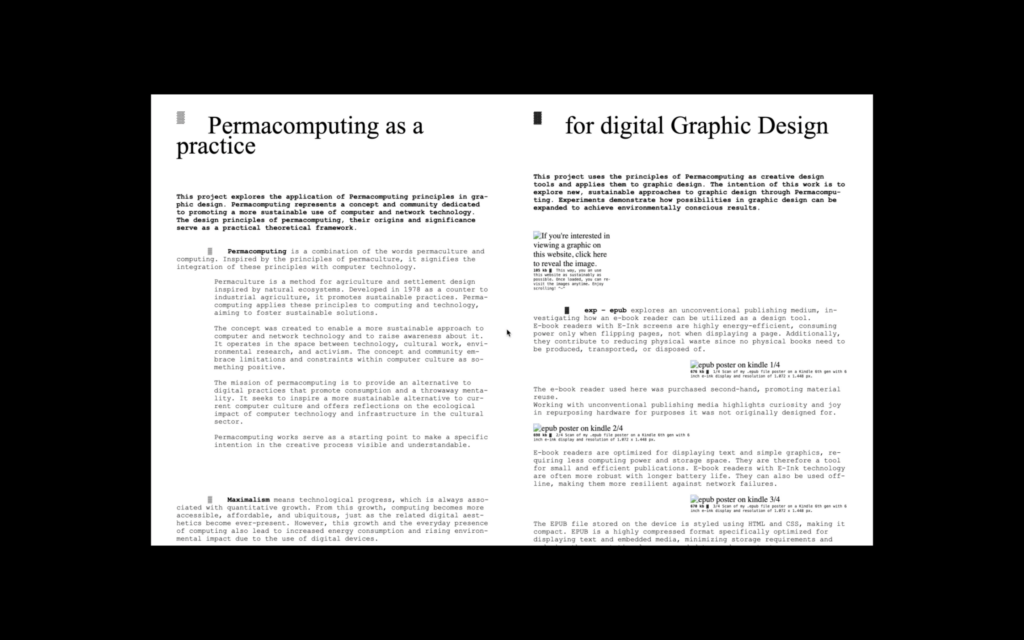
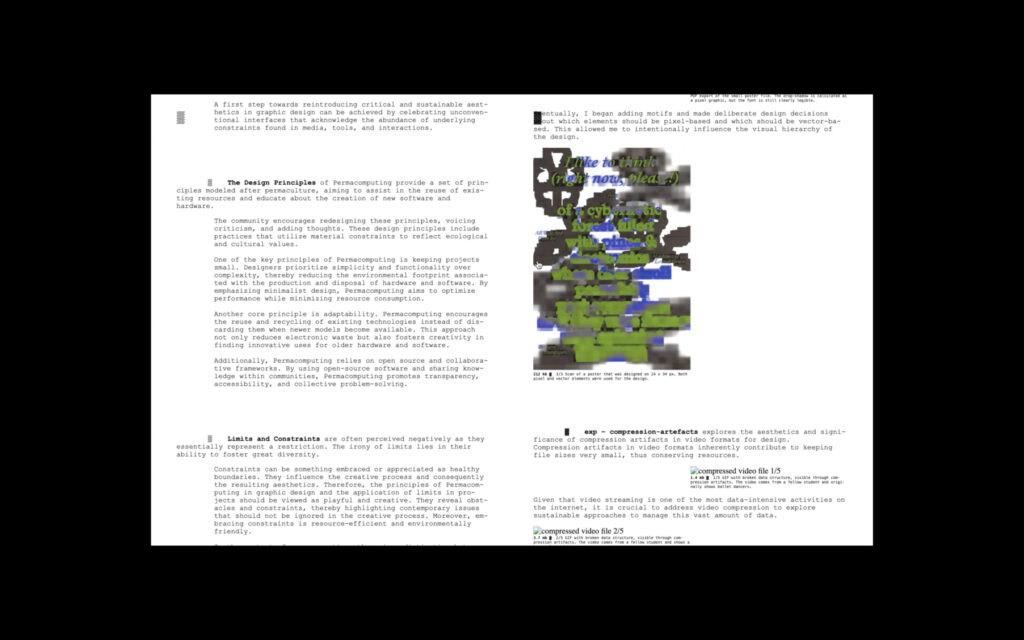
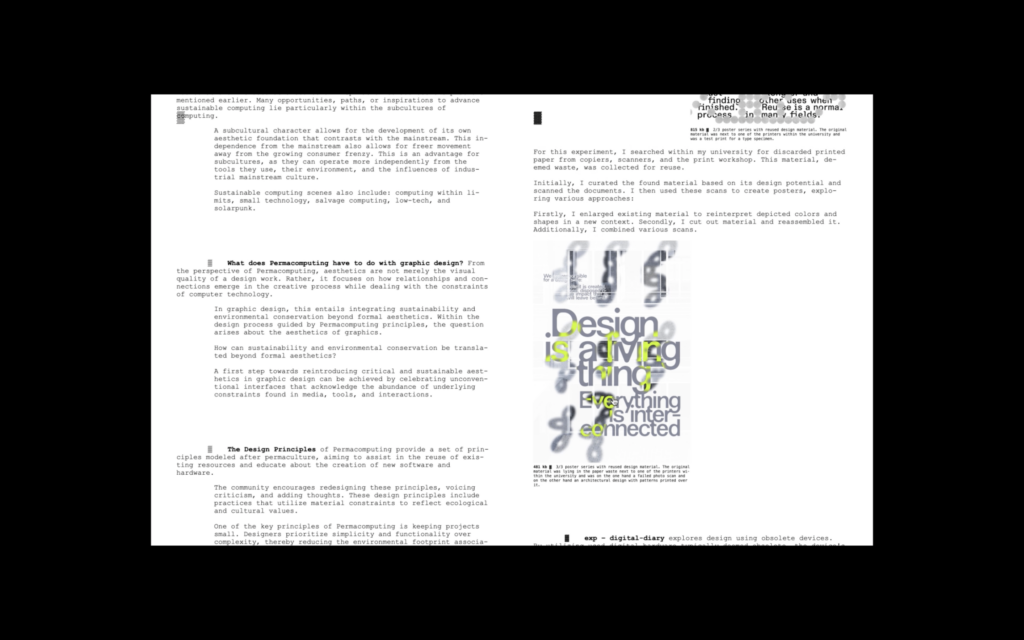
In your Bachelor project you have applied the principles of Permacomputing. How did that go? How did you perceive the design and development process?
I have tried to apply the principles as far as possible in my bachelor project. Of course, I haven’t exhausted everything yet, but it forms a starting point to engage with the topic. I tried to work as resource-efficiently, small-scale, with low complexity, and as transparently as possible.
In the process, I realized that not all principles could be transferred because they were too technically loaded. What worked very well in the process was saving and reusing resources. What worked less well was reusing old devices. There were hurdles that I couldn’t overcome on my own due to my limited technical knowledge. One resource you definitely don’t save on is time.
It was also partly difficult to balance and allocate equal effort to both the Permacomputing and graphic design aspects. The balance was maintained to varying degrees.
In the process itself, I had to proceed very experimentally, as I had to be prepared for some things not to work. The fun of experimenting was definitely a prerequisite, and planning an exact output was difficult. Once I embraced the challenges of the limitations, the process became very exciting and exploratory. With the Permacomputing principle in mind that everything finds its place, I felt even more empowered in the process.
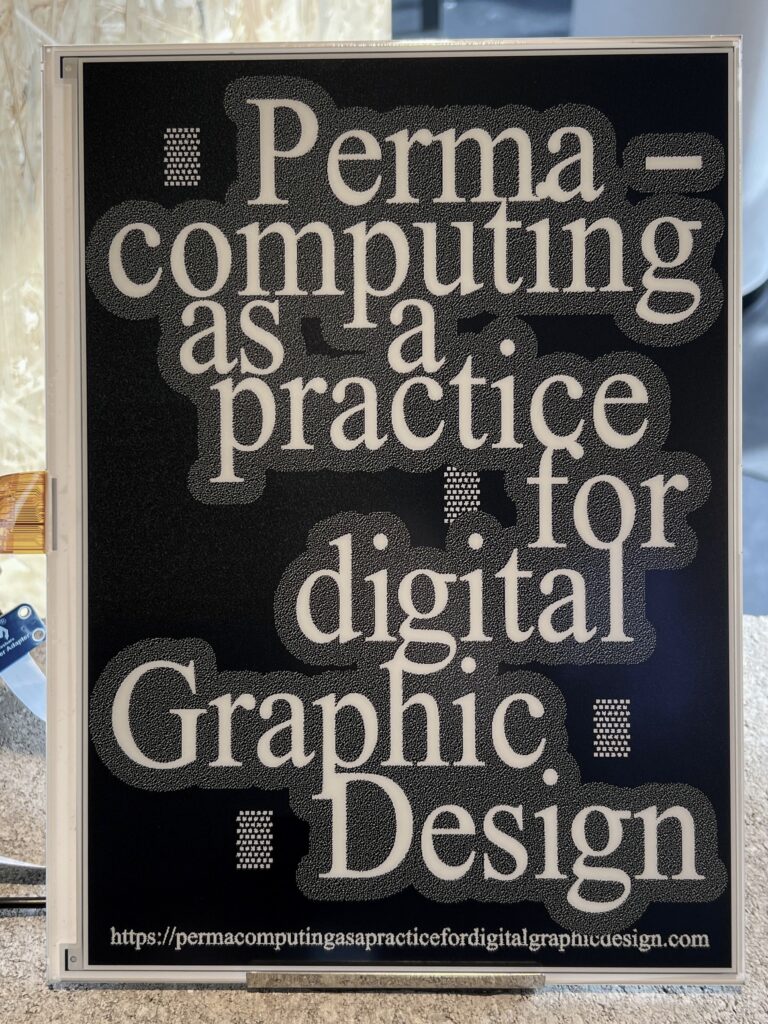
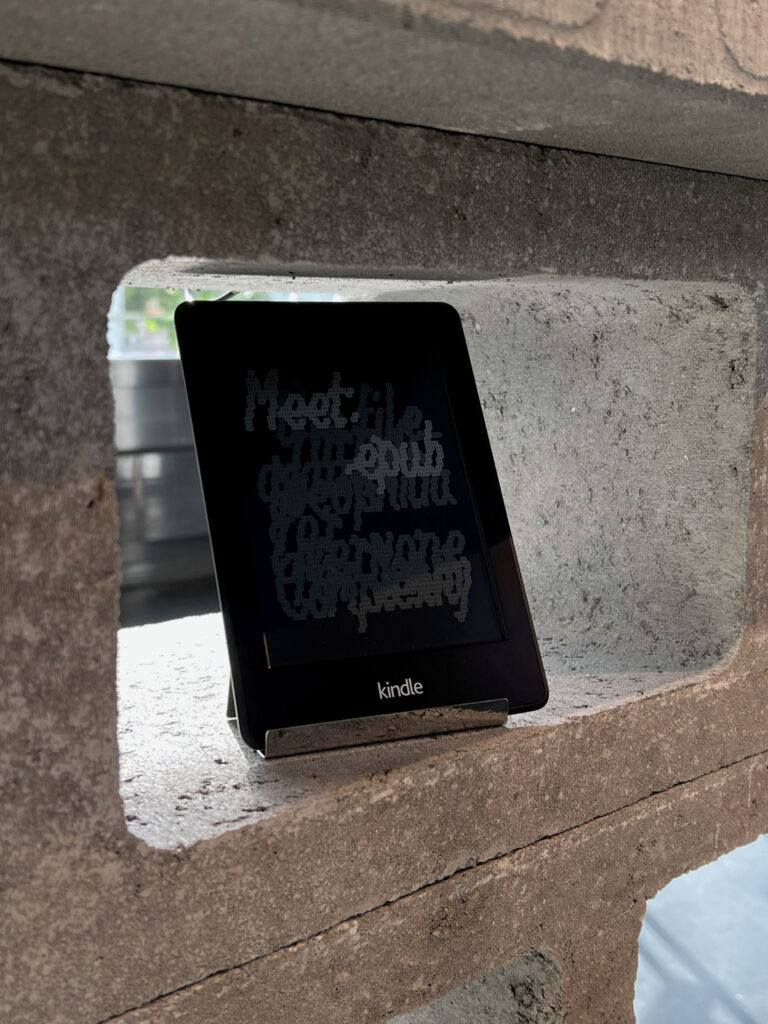
What’s next for you?
I am trying to establish myself in the professional world and bring my acquired knowledge of resource-saving measures and the focus on sustainable design into practice as a graphic designer. I will continue to develop my bachelor’s thesis and maybe gather enough insights to offer workshops to interested individuals. I am very excited about the future and hope to continue meeting people interested in this topic. 🙂
Hannah, thank you very much for this interview!
You’re welcome!
Related Links
Related
 Teaching through the Lens of the Tool – with Prof. John Caserta
Teaching through the Lens of the Tool – with Prof. John Caserta
On a hot day in the summer of 2024, my friend Cem Eskinazi brought a stack of books to our […]
 DJ_Dave – Raving with Code
DJ_Dave – Raving with Code
Sarah, also known as DJ_Dave, writes code to produce rave music. You might say, “Oh, I know that stuff: Algorave! […]
 The Story of 128KB
The Story of 128KB
One day in January 2024, I was lethargically scrolling through my Instagram feed on my laptop. And, as so often […]
 The Future of Processing – with Raphaël and Stef
The Future of Processing – with Raphaël and Stef
I have some really good news: Processing is currently undergoing rapid development! Processing community lead Raphaël de Courville and primary […]
 Deconstruction / Reconstruction – Creative Coding with Prof. Stig Møller Hansen
Deconstruction / Reconstruction – Creative Coding with Prof. Stig Møller Hansen
I am more than excited to share this session with Prof. Stig Møller Hansen with you today, whom I would […]
 CodeCrafted
CodeCrafted
When I completed my bachelor’s degree in 2013, coding was considered a marginal topic. There was a dark spirit at […]
 Kris de Decker on Low Technology
Kris de Decker on Low Technology
In the two years I lived in Barcelona, one person in particular fascinated and inspired me. His name is Kris […]
 My new Podcast “Demystify Technology” is out!
My new Podcast “Demystify Technology” is out!
One of the most beautiful books I have ever held in my hands is “Lo–TEK” by Julia Watson, an architect, […]
